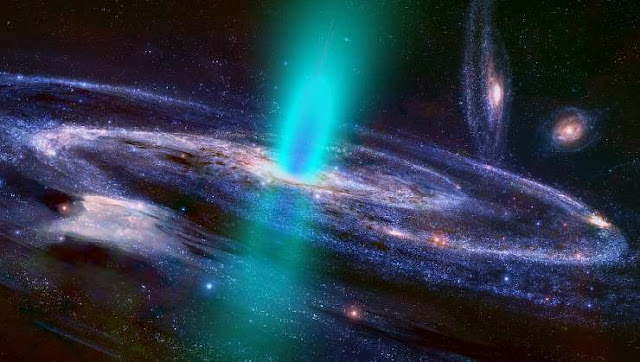On July 5, 1943, Subhash Chandra Bose addressed the army in front of the Town Hall of Singapore as "Supreme Commander" "Walk to Delhi!" Gave the slogan and in collaboration with the Japanese Army, the British and Commonwealth Army took a fierce front together in Burma including Imphal and Kohima.
On 21 October 1943, Subhash Bose, as the supreme commander of the Azad Hind Fauj(Army), formed the Provisional Government of independent India, which was recognized by the governments of 11 countries including Germany, Japan, the Philippines, Korea, China, Italy, Manchuko and Ireland. Japan gave Andaman and Nicobar islands to this temporary government. Subhash went to those islands and renamed them.
In 1944, the Azad Hind Fauj again attacked the British under the leadership of Subhash Chandra Bose and also liberated some Indian territories from the British. The Battle of Kohima was a fierce battle fought from 4 April 1944 to 22 June 1944. In this war, the Japanese army had to retreat, and that proved a turning point.
On 6 July 1944, he released a broadcast in the name of Mahatma Gandhi from Rangoon radio station in which he sought his blessings and best wishes for victory in this decisive war.
In 1944, the Azad Hind Army invaded the British again under the leadership of Subhash Chandra Bose and also liberated some Indian territories from the British. The Battle of Kohima was a fierce battle fought from 4 April 1944 to 22 June 1944. In this war, the Japanese army had to retreat, and that proved a turning point.
On 6 July 1944, he released a broadcast in the name of Mahatma Gandhi from Rangoon radio station in which he sought his blessings and best wishes for victory in this decisive war.
There is still controversy over the death of Netaji Subhash Chandra Bose. While his martyrdom day is celebrated every year on August 18 in Japan, his family members living in India still believe that Subhash did not die in 1945. He was then under house arrest in Russia.
Subhash Chandra Bose meets Hitler.
In Berlin, Subhash first met other German leaders such as the Rieben Trope. He founded the Indian Freedom Organization and Azad Hind Radio in Germany. During this time, Subhash came to be known as Netaji. Adam Fon Trott, a minister in the German government, became a good friend of Subhash.
Finally, on 29 May 1942, Subhash met Adolf Hitler, the supreme leader of Germany. But Hitler was not particularly interested in India. He did not give any clear promise of help to Subhash.
Many years ago Hitler wrote the autobiography named Mayne Kampf. In this book, he had done evil to India and Indian people. Subhash expressed his displeasure with Hitler on the subject. Hitler apologized for his actions and pledged to remove that passage in the next edition of Mayne Kampf.
At last, Subhash came to know that he will not get anything from Hitler and Germany. That is why, on 8 March 1943, he set out in East Kiel in a German submarine with his partner Abid Hasan Safrani in Kiel Port, Germany. The German submarine took her to the shores of Madagascar in the Indian Ocean. There they both swam in the sea and reached the Japanese submarine. At the time of World War II, it was the only interchange of civilians by the submarines of any two countries' navies. This Japanese submarine brought them to Padang port in Indonesia.
Education of Subhash Chandra Bose. Netaji Subhash Chandra Bose was born on 23 January 1897 in the Hindu Kayastha family in Cuttack, Odisha . His father's name was Jankinath Bose and mother's name was Prabhavati. Jankinath Bose was a famous lawyer of the city of Cuttack. At first he was a government lawyer but later he started private practice. He worked for a long time in the monarchy of Cuttack and was also a member of the Bengal Legislative Assembly. The British government gave him the title of Raibahadur. Prabhavati Devi's father's name was Ganganarayan Dutt. The Dutt family was considered an aristocratic family of Kolkata. Prabhavati and Jankinath Bose had 14 children in all, with 6 daughters and 8 sons. Subhash was his ninth child and fifth son. Of all his brothers, Subhash was most fond of Sharad Chandra. Sharad Babu was Prabhavati and Jankinath's second son. Subhash used to call him Mejda. Sharadbabu's wife's name was Vibhavati.
The mysterious death of Subhash Chandra Bose.
After the defeat of Japan in the Second World War, Netaji needed to find a new way. He decided to ask Russia for help. On 18 August 1945, Netaji was on his way to Manchuria by airplane. He went missing during this journey. After this day, they were never shown to anyone.
On 23 August 1945, Tokyo Radio reported that Netaji was coming from a large bomber aircraft in Saigon that his plane crashed near Taihoku Airport on 18 August. Japanese general Shodei, Pilate, and some others aboard the plane were killed. Netaji was severely burnt. He was rushed to Taihoku military hospital where he succumbed. According to Colonel Habiburrahman, his last rites were performed in Taihoku. In mid-September, his ashes were collected and placed in the Rankoji temple in Tokyo, the capital of Japan. According to a document obtained from the Indian National Archives, Netaji died on August 18, 1945 at 21.00 at the military hospital in Taihoku.
After independence, the Government of India appointed the Commission twice in 1956 and 1977 to investigate this incident. Both times it was found that Netaji was killed in that plane crash.
In 1999, a third commission was formed under the leadership of Manoj Kumar Mukherjee. In 2005, the Taiwan government told the Mukherjee Commission that no airplane had crashed on Taiwan land in 1945. In 2005, the Mukherjee Commission submitted its report to the Government of India, stating that there was no evidence of Netaji's death in that plane crash. But the Government of India rejected the Mukherjee Commission report.
Where Netaji went missing on August 18, 1945 and what happened next has become the biggest unanswered mystery in Indian history.
Even today, there is no dearth of people claiming to see and meet Netaji in different parts of the country. Many claims have been made about Netaji's existence from Faithabad's Gumnami Baba to the district Raigad in Chhattisgarh state, but the authenticity of all of them is questionable. In Chhattisgarh, the case of Subhash Chandra Bose went to the state government. But the state government closed the file of the case, considering it not worthy of intervention.
Related post








0 Comments